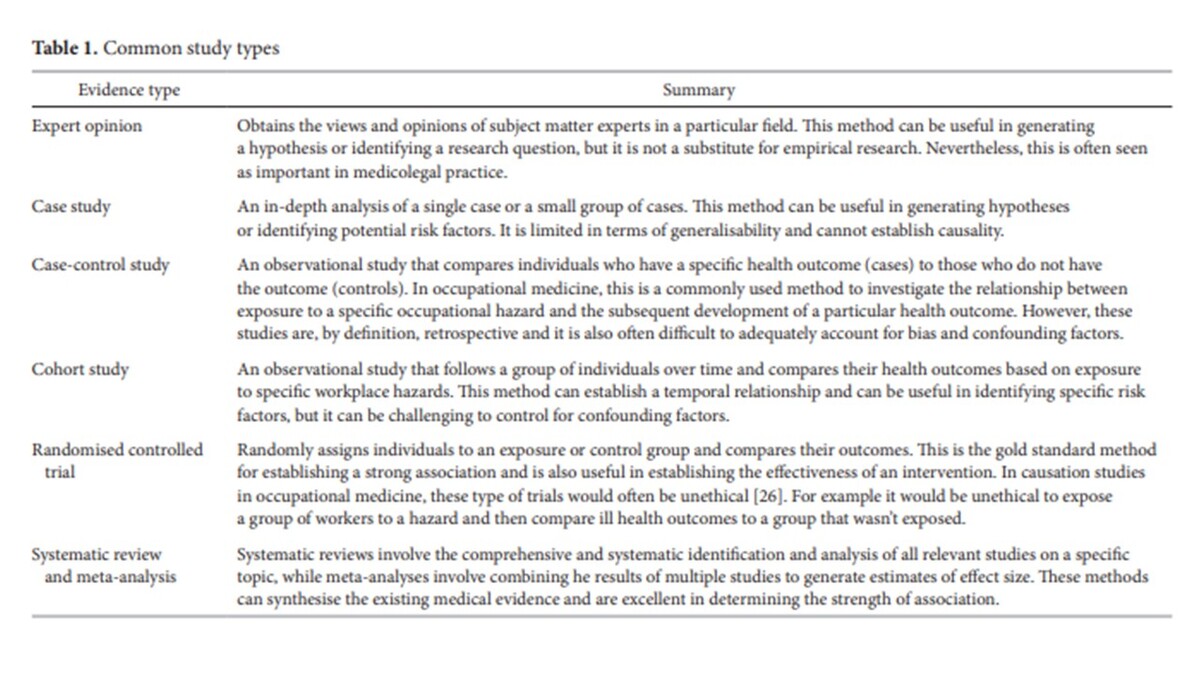Online first
Current issue
Archive
Most cited in 2024
About the Journal
Editorial Office
Editorial Board
Copyright and self-archiving policy
Information clause on the processing of personal data
Declaration of accessibility
Instructions for Authors
Instructions for Reviewers
Contact
Reviewers
2024
2023
2022
2020
2021
2019
2018
2017
2016
2015
2014
2013
Editing and translations
STANDARDS - GUIDELINES
Causation in different scientific disciplines: A comparison of standards in occupational medicine and particle physics
1
Tasmanian Occupational and Environmental Medicine, Hobart, Australia
Online publication date: 2023-10-01
Corresponding author
Jack Rennie Dale
Tasmanian Occupational and Environmental Medicine, 199 Campbell Street, North Hobart 7000 TAS, Australia
Tasmanian Occupational and Environmental Medicine, 199 Campbell Street, North Hobart 7000 TAS, Australia
Med Pr Work Health Saf. 2023;74(4):333-9
KEYWORDS
occupational medicineevidence-based medicinecausationparticle physicslevels of evidenceBradford Hill criteria
TOPICS
ABSTRACT
Occupational medical research involves the collection and analysis of data to draw conclusions about the causes and prevention of workplace injuries and diseases. However, there has been criticism that some studies lack rigour in determining causation. This article examines the similarities and differences between occupational medical research and particle physics in terms of their approach to hypothesis testing, statistical methods, and confounder control. The article also explores the use of criteria such as the Bradford Hill criteria to determine causation in occupational medical research. While particle physics is often viewed as a highly rigorous science, occupational medical research also employs rigorous scientific methods to ensure findings are accurate and reliable. However, there is room for improvement in determining causation in occupational medical research, particularly in the use of criteria such as the Bradford Hill criteria to guide the development of more robust studies. It is essential for occupational medical research to adhere to rigorous scientific methods to deliver findings that can help reduce workplace injuries and diseases. The use of criteria such as the Bradford Hill criteria can ensure that the conclusions drawn. Med Pr Work Health Saf. 2023;74(4):333–9.
Share
RELATED ARTICLE
We process personal data collected when visiting the website. The function of obtaining information about users and their behavior is carried out by voluntarily entered information in forms and saving cookies in end devices. Data, including cookies, are used to provide services, improve the user experience and to analyze the traffic in accordance with the Privacy policy. Data are also collected and processed by Google Analytics tool (more).
You can change cookies settings in your browser. Restricted use of cookies in the browser configuration may affect some functionalities of the website.
You can change cookies settings in your browser. Restricted use of cookies in the browser configuration may affect some functionalities of the website.






